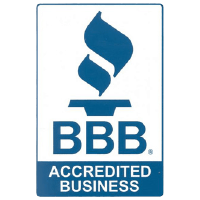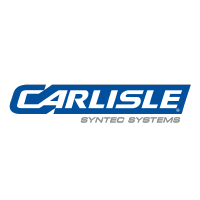URGENT: Some Insurance Companies Now Requiring Homeowners to Replace Aging Roofs Before Policy Renewal! Learn More
Overview of the Insurance Claim Process
-
File Your Claim
The first step is to contact your insurance company and file a claim. They will ask for:
- The date of loss (when the damage occurred)
- The type of damage affecting your roof
If you're unsure of these details, our expert inspectors can help determine them for you based on storm data and a thorough roof assessment.
-
Adjuster Inspection
After filing, your insurance company will assign an adjuster and schedule a site visit to inspect the damage.
- We strongly recommend having our inspector meet the adjuster on-site to act as your advocate.
- Insurance adjusters may not always identify all the damage, but our team ensures nothing is overlooked.
-
Reviewing Your Insurance Estimate
If the adjuster approves your claim, they will provide a summary or scope of work, detailing what’s covered.
- Insurance companies use a program called Xactimate to calculate pricing based on your area.
- Our team will review this estimate with you to ensure all necessary roof components are included.
- Many adjusters leave off required code upgrades—we work to get these added to ensure your new roof meets current building codes.
-
Receiving Your Initial Insurance Check
Once your claim is approved, your insurance company will issue an initial check for the approved amount.
- In many cases, the check is made payable to both you and your mortgage company.
- You will need to get the check endorsed by your mortgage company before depositing it.
-
Completing Your Roof & Final Insurance Payment
After we complete your roof replacement:
- We provide an invoice to your insurance company.
- If your policy includes recoverable depreciation, your insurer will release the remaining funds after receiving our invoice.
With Continental Roofing on your side, you can be confident that your claim is handled correctly and that you receive the full coverage you’re entitled to.
Need help filing your claim? Schedule an inspection today!
Roof Claim Adjusters
When you file a roof damage claim, your insurance company will assign a claims adjuster to assess the extent of the damage and determine what will be covered under your policy. While adjusters play a critical role in the claims process, it’s important to understand how they operate and why having a roofing professional on your side can make a difference.
What Does a Claims Adjuster Do?
A claims adjuster is responsible for:
- Inspecting your roof to determine if the damage qualifies for a claim.
- Evaluating whether the damage was caused by a covered event (such as hail or wind) or general wear and tear.
- Creating a damage report and estimating repair or replacement costs using a program called Xactimate
- Providing a scope of work detailing what the insurance company will cover.
Why You Need an Advocate on the Roof
While most adjusters aim to be fair, their primary responsibility is to the insurance company—not the homeowner. This can sometimes result in:
- Missed storm damage that should be covered.
- Underestimated repair costs, leading to out-of-pocket expenses.
- Exclusions of necessary upgrades, such as code-required improvements.
By having one of our expert inspectors present during the adjuster's visit, you gain a knowledgeable advocate who can:
- Ensure all damage is properly documented.
- Clarify the full scope of necessary repairs.
- Negotiate for fair compensation and code-compliant work.
What If Your Claim Is Denied or Underpaid?
If your insurance adjuster denies the claim or provides an insufficient settlement, you’re not out of options. We can help you:
- Request a reinspection with additional documentation.
- Supplement your claim if key repairs were left out.
- Provide expert insights to support an appeal if necessary.
Having a trusted roofing professional involved in the claims process ensures that you get the full coverage you deserve. Don’t leave it to chance—schedule an inspection today and let us help you through the process!
Calculating Your Roof Claim
Once your insurance adjuster inspects your roof and determines that storm damage is covered under your policy, they will calculate the claim payout using a standardized pricing system. Understanding how this process works can help you ensure you receive the full compensation needed to properly restore your roof.
-
How Insurance Companies Calculate Roofing Claims
Insurance companies use a specialized software called Xactimate to determine the cost of roof repairs or replacement. This system:
- Uses local market pricing to estimate labor and material costs.
- Breaks down your roof into components, such as shingles, underlayment, flashing, and ventilation.
- Applies depreciation based on the age of your roof.
-
Reviewing Your Insurance Estimate
Once your adjuster completes their report, they will provide a Summary of Loss or Scope of Work, outlining what the insurance company will cover.
Common issues homeowners face:
- Missing required upgrades – Many estimates leave off building code upgrades, such as proper valley protection or drip edge installation.
- Underestimated costs – Some line items may not reflect current material or labor costs.
- Partial coverage for repairs – Adjusters may only approve a portion of the work needed.
Before moving forward, our team will:
- Review the estimate with you to ensure it includes all necessary roof components.
- Identify any missing items that need to be added.
- Submit supplements to your insurance company for any necessary adjustments.
-
Maximizing Your Claim & Avoiding Out-of-Pocket Costs
Insurance companies often try to minimize payouts, but our team ensures you get everything you’re entitled to under your policy. We work with your adjuster to:
- Secure proper compensation for all required work
- Ensure code upgrades are covered
- Help you recover full depreciation amounts
Let us handle the details so you don’t overpay for your new roof. Get started today with a free inspection!
Understanding Your Insurance Deductible
Your deductible is the amount you’re responsible for paying out of pocket before your insurance covers the rest of your roof replacement or repairs.
- Some policies have a flat-rate deductible, typically $500 or $1,000, regardless of your home’s value.
- Others use a percentage-based deductible, where your out-of-pocket cost is calculated as a percentage of your home’s insured value. For example, if your home is insured for $300,000 and your deductible is 1%, you would pay $3,000 before your insurance covers the remaining costs.
It’s important to review your policy so you understand what you’ll owe before filing a claim. If you’re unsure, our team can help you navigate your insurance paperwork!
Understanding Depreciation & How It Affects Your Claim
When filing a roof damage claim, depreciation plays a key role in determining how much your insurance will pay. Depreciation accounts for the age and condition of your roof, reducing the payout based on wear and tear over time.
Your claim will typically be based on one of two coverage types:
- Replacement Cost Value (RCV) Covers the full cost of replacing your roof with a similar one, minus your deductible. Any depreciation applied to your claim is recoverable, meaning once the work is completed and an invoice is submitted, your insurance will release the remaining funds.
- Actual Cash Value (ACV) Pays only the depreciated value of your roof at the time of loss. This means the older your roof, the less your insurance will cover, potentially leaving you with out-of-pocket costs beyond your deductible.
RCV policies offer better financial protection, while ACV policies may result in higher costs for homeowners. Understanding your policy can help you prepare for what to expect when filing a claim. If you have questions, our team can help review your insurance estimate!
Need help filing your claim? Schedule an inspection today!





